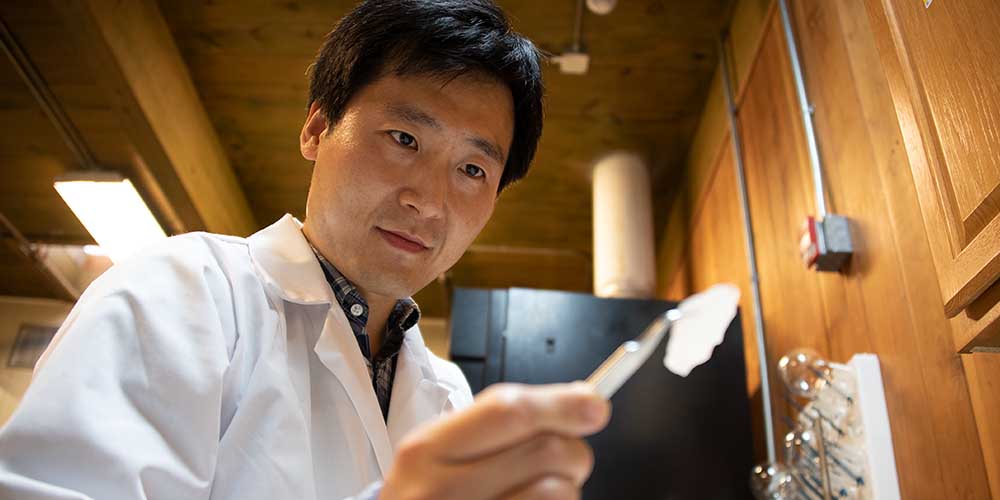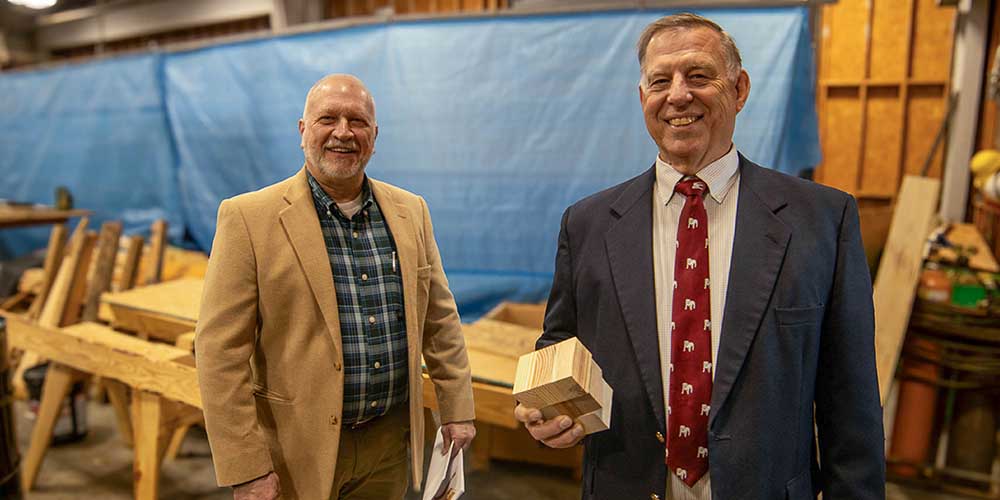Building Materials and Composites Stories

A Better Building Material
Forest and Wildlife Research Center sustainable bioproducts scientists researched the combination of nanocellulose with Mississippi clay to create clay-cellulose fiber sheets as non-toxic fire retardant for the oriented strand board that becomes wood paneling. The work aimed to make wood paneling less flammable and evaluate the thermal and flame shielding properties of clay-cellulose fiber based on sheet as nanostructured fire-resistant materials. This will hopefully create wood-based products to better insulate buildings and tie into broader application to further reduce the carbon footprint of the forest products and agricultural industries.
2018

Market Barriers
Dr. Dan Seale, a professor in Mississippi State's Forest and Wildlife Research Center, is working to increase the value of undervalued hardwood species like yellow poplar and sweet gum. Through a USDA Forest Service grant, Seale's team has created a database mapping area in the eastern U.S. with high volumes of these species, helping mills locate ideal spots for processing facilities. The goal is to improve the economic value of Mississippi's timberland by finding new uses for these woods. Keith Ward, a doctoral student, is analyzing the suitability of these hardwoods for engineered wood products like I-Joists and structural panels. By developing markets for this timber, the research benefits landowners, mills, and the broader supply chain, creating jobs and boosting the economy.
2023

Using the Resources
Dr. Mostafa Mohammadabadi, an assistant professor at Mississippi State's Forest and Wildlife Research Center, is researching ways to utilize small-diameter and underutilized materials (SDUs) in forests, which are often left unused due to high transportation costs. By developing products similar to cross-laminated timber (CLT) and glue-laminated timber (glulam), SDUs can be repurposed for construction, reducing wildfire fuel and preventing carbon emissions from burning. These wood products are carbon-negative, as they continue to store carbon even after being cut. This research aims to improve forest health, create a market for SDUs, and support sustainable forest management practices. The project also emphasizes education, inspiring students from diverse disciplines to contribute to creating green solutions in forestry and construction.